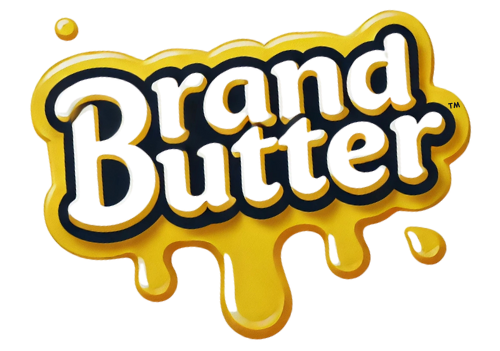The Top Mistakes Atlantic Canadian Businesses Make With Their Websites
In today’s digital-first economy, your website is often the first and most critical point of contact between your business and its future customers. It functions as your perpetual storefront, your most resilient sales representative, and the core of your brand identity, operating around the clock. For businesses nestled within the vibrant communities of Atlantic Canada - from the historic streets of Halifax and the bustling capital of Charlottetown to the entrepreneurial hubs of Moncton and the colourful ports of St. John's - cultivating a powerful online presence is no longer a luxury; it is an absolute necessity for survival, growth, and competitive relevance.
Despite this, a significant number of local companies inadvertently undermine their own potential. Whether due to limited resources, a lack of technical expertise, or simply being too busy running day-to-day operations, many fall prey to a series of common yet devastating website mistakes. These errors do more than just look unprofessional; they actively cripple online visibility, erode hard-earned credibility, confuse potential customers, and ultimately, strangle leads and sales. The investment in other marketing channels, from social media campaigns to local event sponsorships, is wasted if the final destination - your website - fails to convert interest into action.
The positive news is that these pitfalls are entirely recognizable and correctable. By systematically identifying, understanding, and rectifying these issues, you can transform your website from a digital weak link into your most powerful engine for business growth. This guide will walk you through the seven most common website mistakes holding Atlantic Canadian businesses back and provide a clear, actionable blueprint for fixing each one.
1. Ignoring Mobile Responsiveness
The data on mobile usage is unequivocal and impossible to ignore: well over 60% of all web traffic in Canada now originates from mobile devices like smartphones and tablets. Consider the modern consumer's journey: a tourist walking the Halifax waterfront searches for a dinner reservation on their phone. A homeowner in Fredericton has a plumbing emergency and searches for a local solution between calls. A student in Charlottetown looks for a study spot with their laptop. If your website is difficult to navigate, read, or interact with on a small screen, they will not struggle. They will simply hit the back button and instantly visit a competitor whose site offers a seamless experience.
This is not merely a user preference; it's a core ranking factor. Google has formally adopted mobile-first indexing. This means its algorithm predominantly uses the mobile version of your site's content for ranking and indexing. A non-responsive or poorly optimized mobile site is effectively penalized in search results before a user even has a chance to see it.
How to Fix It: Your Mobile Action Plan
- Commit to Responsive Design: Ensure your website is built on a responsive framework that automatically adjusts its layout, images, and content to fit any screen size seamlessly.
- Test on Real Devices: Don't just trust the preview on your desktop. Test your website on various actual smartphones and tablets (both iOS and Android) to check for formatting issues, slow-loading elements, and "pinch-and-zoom" problems.
- Simplify the User Journey: Design for thumbs. Use large, tappable buttons, streamlined menus (like a hamburger menu), and ensure forms are easy to fill out on a small screen.
- Leverage Free Tools: Use Google's Mobile-Friendly Test to analyze your pages and receive specific, actionable feedback on mobile usability issues.
2. Tolerating Slow Loading Speeds
In our high-speed digital world, user patience is measured in milliseconds. Extensive research shows that a one-second delay in page load time can lead to a 7% reduction in conversions, an 11% reduction in page views, and a significant 16% increase in bounce rates. For a bed and breakfast in Cavendish, PEI, a slow-loading gallery of room photos could mean a lost booking worth thousands of dollars. For an e-commerce store in Dartmouth selling artisan crafts, a sluggish checkout process will directly lead to abandoned carts and lost revenue.
Site speed is not a minor technical metric; it is a direct conversion and revenue factor and a confirmed key ranking signal within Google's search algorithm. A fast website is a formidable competitive advantage.
How to Fix It: Your Speed Optimization Checklist
- Compress and Optimize Images: This is the lowest-hanging fruit. Large, unoptimized images are the most common cause of slow sites. Use tools to compress images without sacrificing visible quality before uploading them.
- Evaluate Your Web Hosting: Your hosting provider is the foundation of your site's performance. Inexpensive, overcrowded shared hosting plans are often the root cause of slow speeds. Invest in a quality hosting provider known for performance and reliability.
- Implement Caching: Use a caching plugin to serve stored (cached) versions of your pages to returning visitors, drastically reducing load times.
- Run a Diagnostic: Use powerful free tools like Google PageSpeed Insights or GTmetrix. These provide a detailed performance report along with prioritized, practical recommendations for improvement, such as leveraging browser caching, minifying code, and reducing server response times.
3. Overlooking Local SEO Optimization
For most Atlantic Canadian businesses, your most valuable customers are local. People are constantly searching with clear local intent, using phrases like "best seafood restaurant Halifax north end," "emergency plumber Fredericton," or "family-friendly PEI vacation rentals with ocean view." If your website is not meticulously optimized for these hyper-specific local searches, you are missing out on a stream of highly qualified leads who are actively ready to engage, visit, or purchase.
How to Fix It: Your Local SEO Blueprint
- Claim and Optimize Your Google Business Profile: This is your single most important tool for local visibility. Ensure your business name, address, phone number (NAP), hours, and attributes are 100% accurate and consistent across the web. Upload high-quality photos and actively encourage and respond to customer reviews.
- Embed a Google Map: Make it incredibly easy for customers to find you by embedding an interactive Google Map directly on your contact page.
- Incorporate Local Keywords Naturally: Weave location-based keywords into your page titles, meta descriptions, headers, and body content. Think about neighbourhoods and landmarks (e.g., "Dartmouth Crossing," "Historic Properties," "University Avenue").
- Get Listed in Local Directories: Ensure your business is listed in relevant online directories like your local Chamber of Commerce, Tourism associations, and industry-specific directories. Consistent citations strengthen your local authority.
4. Utilizing Weak Calls-to-Action (CTAs)
A visitor arrives on your website. They are interested. What do you want them to do next? If the answer is not immediately and intuitively obvious, you have a conversion problem. Weak, hidden, or non-existent Calls-to-Action leave users guessing, resulting in indecision and lost leads. Your CTAs are the signposts that guide users toward the desired action, turning passive browsing into active engagement.
How to Fix It: Designing Powerful CTAs
- Use Action-Oriented Language: Be specific and convey value. Use strong verbs like "Book," "Schedule," "Download," or "Register." Replace generic "Click Here" with "Request Your Free Quote" or "Shop the New Collection."
- Design for Visibility: Make your CTA buttons stand out. Use a colour that contrasts sharply with your site's background and ensure they are large enough to be easily noticed and clicked.
- Place Them Strategically: CTAs should be placed in multiple logical locations: prominently in the header, within relevant content sections, and repeatedly in the sidebar and footer. Don't make users scroll to the very bottom of a page to find out what to do next.
- Test and Refine: Use A/B testing to try different versions of your CTAs. Test different colours, wording, and placements to see what resonates most effectively with your audience and drives the highest conversion rates.
5. Settling for Outdated Design & Branding
Visual first impressions on the web are formed in a mere 50 milliseconds. An outdated, cluttered, or unprofessional website design immediately and subconsciously undermines your credibility. It can make potential customers question the quality of your work, your attention to detail, and even whether your company is still in business. A modern, clean, and trustworthy aesthetic is paramount for converting visitors into clients. It communicates that you are current, professional, and invested in your business.
How to Fix It: Refreshing Your Online Presence
- Prioritize User Experience (UX): Ensure your site is easy to navigate with a simple, logical menu structure. Users should be able to find any information within three clicks.
- Use High-Quality Visuals: Blurry, low-resolution photos or generic stock imagery hurt your brand. Invest in professional photography that showcases your team, your products, and your location.
- Maintain Brand Consistency: Your website, social media profiles, email newsletters, and print materials should all use the same logo, colour palette, typography, and brand voice. This consistency builds strong, recognizable brand recall and trust.
- Refresh Content Regularly: An updated blog, news section, or portfolio shows your business is active, current, and an authority in your field. Fresh content is also a positive signal to search engines.
6. Neglecting Web Accessibility
Web accessibility ensures your website is usable by everyone, including people with disabilities. This includes individuals with visual, auditory, motor, or cognitive impairments. Beyond being an ethical imperative and a growing legal requirement, embracing accessibility is a mark of excellent, user-centric design that significantly expands your potential audience. Ignoring it can exclude a substantial portion of the population and damage your brand's reputation.
How to Fix It: Key Steps Toward Accessibility
- Add Alt Text to All Images: Descriptive alt text allows screen reader users to understand the content and function of your images. It also helps with SEO.
- Ensure Sufficient Color Contrast: Text should stand out clearly against its background to aid users with low vision or colour blindness. Use online contrast checkers to verify your colour choices.
- Enable Keyboard Navigation: Ensure users can navigate your entire site and interact with all features using only their keyboard, which is essential for those who cannot use a mouse.
- Follow Established Guidelines: Refer to the Web Content Accessibility Guidelines (WCAG) for a comprehensive framework on how to make web content more accessible.
7. Operating Without Analytics Tracking
Managing a website without analytics is like sailing the Atlantic without a compass or charts. You are moving forward, but you have no verifiable data on where your visitors are coming from, what content they engage with, or where they are abandoning your site. Without this crucial insight, you are making marketing decisions based on guesswork, not evidence. You cannot reliably improve what you do not measure.
How to Fix It: Becoming Data-Driven
- Install Google Analytics (GA4): This free tool is the industry standard and provides a wealth of data about your website's performance.
- Set Up Goals and Conversions: This is the most critical step. Configure your analytics to track key actions that matter to your business, such as form submissions, phone calls, brochure downloads, or online purchases.
- Review Reports Regularly: Make it a habit to check your analytics dashboard. Analyze which traffic sources bring the most valuable users, which pages have the highest bounce rates, and what content is most popular.
- Make Informed Decisions: Use these data-driven insights to refine your content strategy, fix underperforming pages, and double down on what works. This allows you to allocate your time and budget effectively for the highest return on investment.
Transform Your Website into Your Best Employee
Your website is a dynamic growth engine, not a static online brochure. By addressing these seven common mistakes, you can dramatically improve your site's ability to attract, engage, and convert customers across Atlantic Canada. The goal is to provide a fast, user-friendly experience that is optimized for local search, guided by clear calls-to-action, and built on a foundation of trust and accessibility.
A modern, data-driven website will build credibility, generate more qualified leads, and become the most reliable driver of sustainable business growth. It’s an investment that pays dividends 24 hours a day, seven days a week.
Ready to turn your website into your most valuable asset? The team at Brand Butter Marketing specializes in building effective, conversion-focused websites for Atlantic Canadian businesses. Contact us today for a free, no-obligation consultation. Let's build a website that works as hard as you do.




